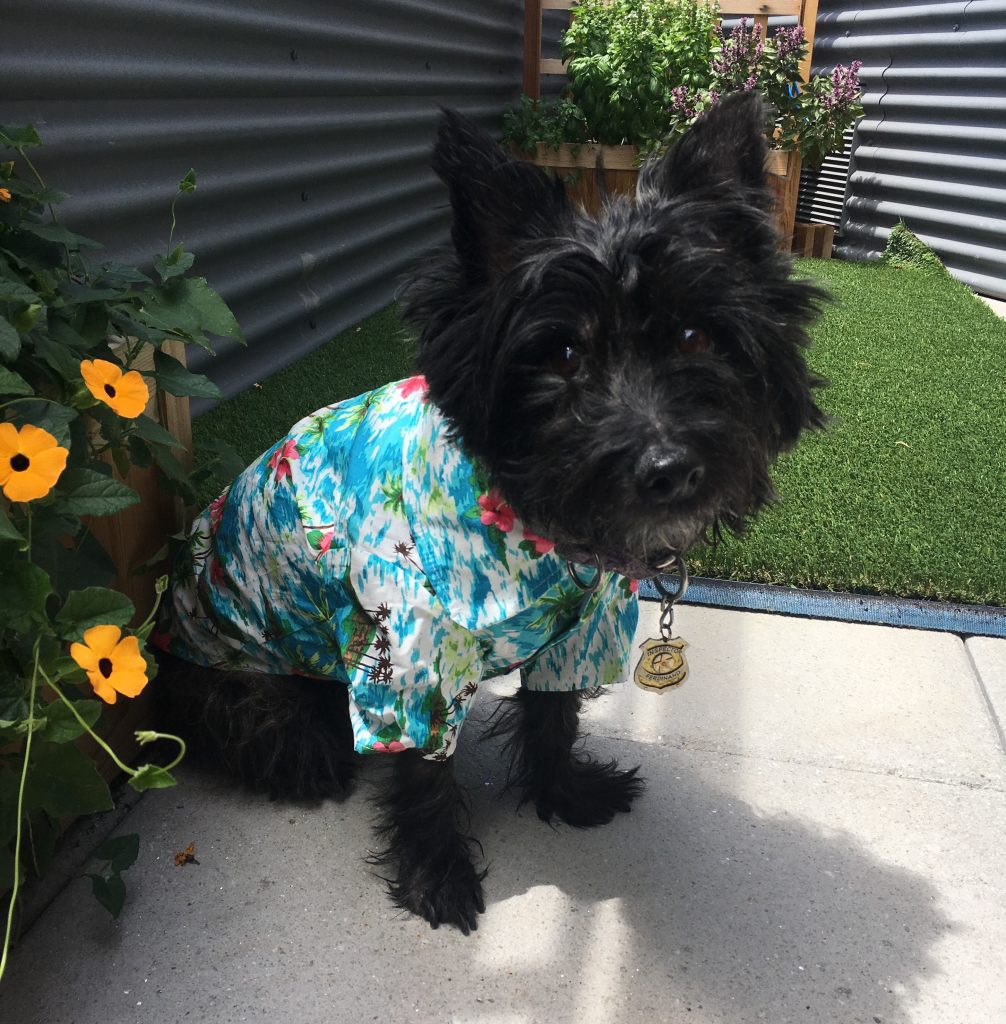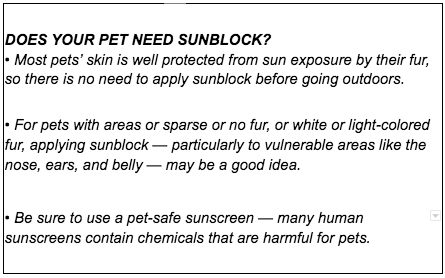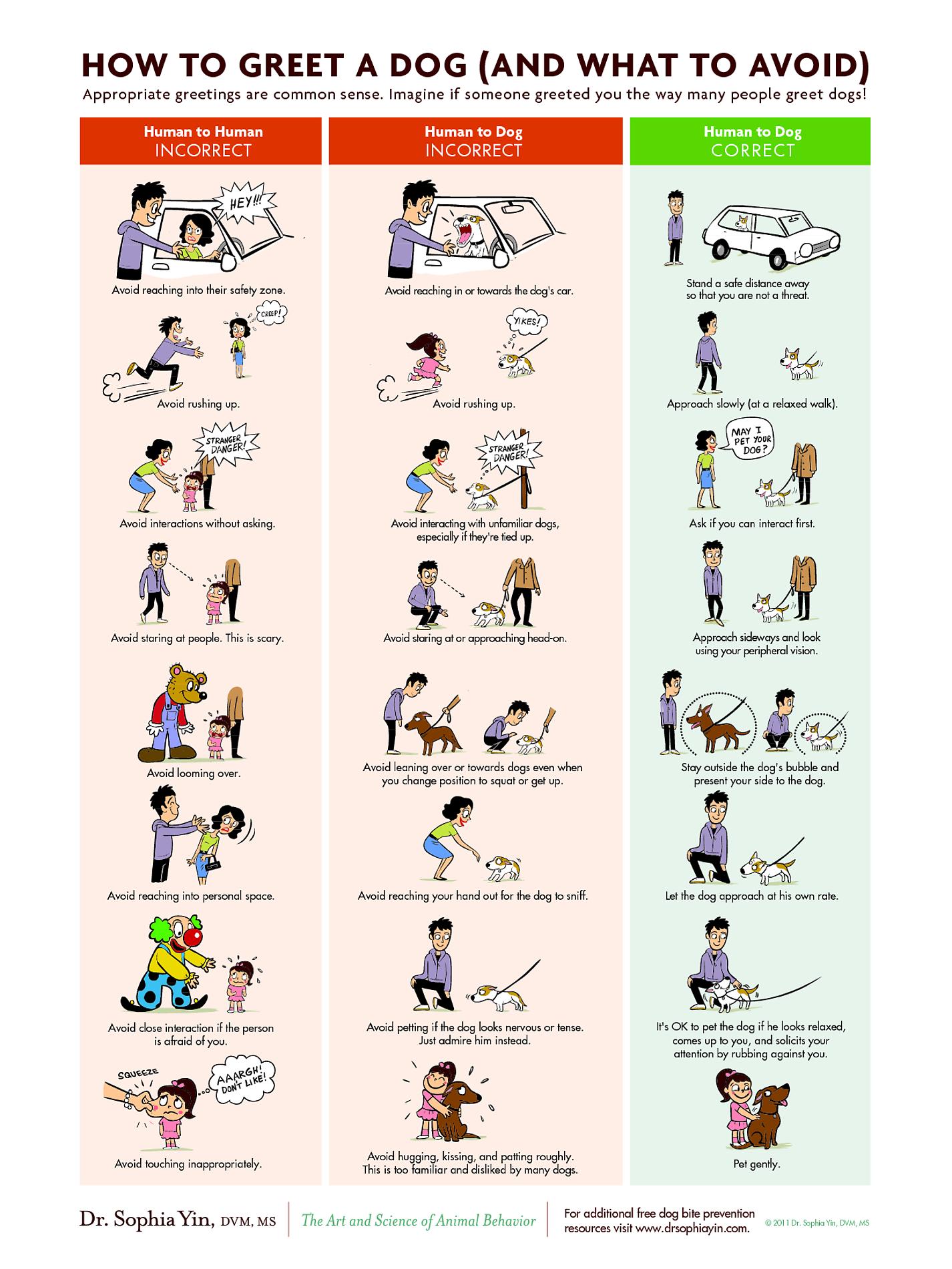Keeping Your Pet Cool When Temperatures Spike

By now, we’ve all heard about the extreme danger of leaving your pet inside a parked car on a warm day — even just for a few minutes with the windows cracked. But less well known is the danger that hot weather — even just temperatures in the 70s and 80s — can pose to our furry friends during everyday outdoor activities, or even at home. And this risk is even greater in areas with high humidity, as is often the case in NYC.
Dogs and cats have only a limited ability to cool themselves since, unlike humans, they cannot automatically regulate their body temperature through sweating. Instead, they release heat by panting and, to a limited degree, through their paw pads. This leaves our furry friends particularly susceptible to the effects of heat stress. And some pets — older or very young animals; breeds with shortened muzzles like bulldogs, pugs, and persian cats; and those with thicker, darker fur — are even more vulnerable to the heat than others.
Here are a few key steps you can take to protect your pet during hot weather, and prevent any heat-related health issues.
Keep It Cool and Stay in the Shade
When temperatures start skyrocketing, it’s time to scale back your pet’s typical activities or change your habits to avoid the soaring midday heat. Instead, try to walk your dog (or cat) during the cooler hours in the early morning and the evening. (This also goes for letting pets outside in the yard — if you are lucky enough to have one in the city! — but never leave them outdoors unsupervised in the heat.) If you do need to relieve your dog during midday, make it a quick bathroom break and keep to the shade.
For long-haired pets, keeping fur trimmed can help, but shaving your pet is never a good idea — in fact, their coat helps to insulate them from the heat as well as the cold, and protects against sunburn. (Keeping the fur clean, combed, and mat-free encourages this process.) Instead, there are a variety of products that can help pets stay cool and comfortable, such as cooling vests or collars — though these must be regularly re-soaked and kept wet in order to be effective — and gel-filled cooling pads that are pressure-activated when your pet lies down on them. A cool, wet washcloth, a romp through a sprinkler (or dip in a kiddie pool), or a cool bath after getting home can also help keep your pet’s body temperature in a healthy range.
Prevent Dehydration
Staying hydrated is essential for your pet’s health year round, but particularly in hot weather, when dehydration increases the risk of overheating. So, it’s important for pets to have easy access to plenty of fresh drinking water. Keep multiple water bowls around the home or yard — and make sure to clean them daily to prevent the buildup of potentially harmful bacteria. You can also add ice chips to the water to keep it cool. Some cats and dogs are more enthusiastic about drinking running water, and if that’s the case, a pet drinking fountain that keeps the water circulating might be a good investment.
When you head out for a walk or a car trip, always be sure to bring water with you. There are a variety of products like collapsible bowls and pet water bottles (with a built-in bowl) that make it easier to provide water to your pet while on the go. (And many dogs enjoy pet-safe frozen treats like pupsicles.)
Paw Protection
Another crucial issue to remember is to protect your pet’s paws: Asphalt and cement can become dangerously hot in direct sunlight, leading to discomfort or even paw pad burns. (According to one study, at an air temperature of just 77 degrees Fahrenheit, the temperature of asphalt exposed to direct sunlight can rise to a whopping 125 degrees!)
So, when out walking your dog, stick to the shady sides of the street as much as possible — or grass, if you live near enough to a park or green space. Other options for protecting paws from surface heat are breathable booties that are made especially for hot weather, or protective wax that can be applied to the paws before walks (though this tends to be less effective than the physical barrier provided by a bootie).
Watch for Signs of Overheating
No matter how careful you are, it is important to keep an eye on your pet and to be aware of the signs of heat stroke — dogs and cats may not even realize that they are overheating, especially when they are having a great time running or playing. Symptoms of overheating or heat stroke can include heavy panting, difficulty breathing; disorientation or moving in an uncoordinated manner; lethargy; excessive drooling: or vomiting and diarrhea.
It’s always a good idea to keep a digital, rectal thermometer in your pet’s first aid kit, so that you can find out quickly if you suspect they are overheated. Normal body temperature in dogs and cats can range up to 102.5 degrees Fahrenheit. At any reading of 104 degrees or above, or if your pet exhibits symptoms of heat stroke, we would advise you to seek immediate veterinary care, ideally at an ER facility such as VERG or Blue Pearl. To be safe, body temperatures must be lowered in a gradual, controlled manner, so it’s best done under a veterinarian’s care. (Though you can use towels soaked in lukewarm water to cool your pet when on the way to the vet.)
Do Dogs Need Sunscreen?
It depends! Typically your dog’s (and cat’s) skin is protected from harmful sun damage because of their fur. However, you should apply sunscreen if your pet’s fur is sparse, lightly colored, or if your pet has bald spots.

Need more advice on how to protect your pet and keep them healthy all year long? Read our Blog or Contact Us.
How To Greet A Dog
How To Greet A Dog
You know that feeling you get every time you see a new dog? That somewhat uncontrollable urge to run over scoop that pup up and snuggle it for hours. As tempting as it may be, think about it from the dog’s point of view, scary right? If a dog sees you as a threat they may feel like they have no choice other than to bite. Here are some tips on how to greet dogs in a non-threatening manner.
– Always ask the dog’s owner
– Do not make direct eye contact
– Approach the dog slowly
– Get down on their level
– Wait for them to approach you\
– Pet gently
– Pay attention to their body language

Laser Therapy
Have you ever considered that pain can be managed without drugs or surgery?
At All Creatures Vet Hospital of Brooklyn we are a Companion Animal Laser Therapy Pain Relief Center.
https://www.litecure.com/companion/for-pet-owners/
Drug Free. Surgery Free. Relief for your pet.
How does it work?
Laser light is delivered to the affected area by a non-invasive hand- piece. This Class IV laser light induces a biological response within the cells called “photo-bio-modulation” which leads to reduced pain, reduced inflammation, and increased healing speed. During treatment your pet may feel gentle soothing warmth.
What does it treat?
Many common chronic and acute conditions can be helped with Laser therapy.
To name a few:
-Arthritis
-Wounds
-Degenerative Joint Disease
-Post Surgical Healing and Pain Relief
-Dermatological Disorders
What are the treatment protocols?
Treatment protocols are unique to each patient and condition. Upon an initial Veterinary assessment, a plan will be created which will vary in time, complexity and cost. Often times, laser can also be used to enhance other treatment plans recommended by the Veterinarian.
Staff Thoughts:
What is your favorite thing about performing laser therapy?
“I really enjoy being able to see the progress in older pets becoming more mobile and comfortable.”
-Kimmy




